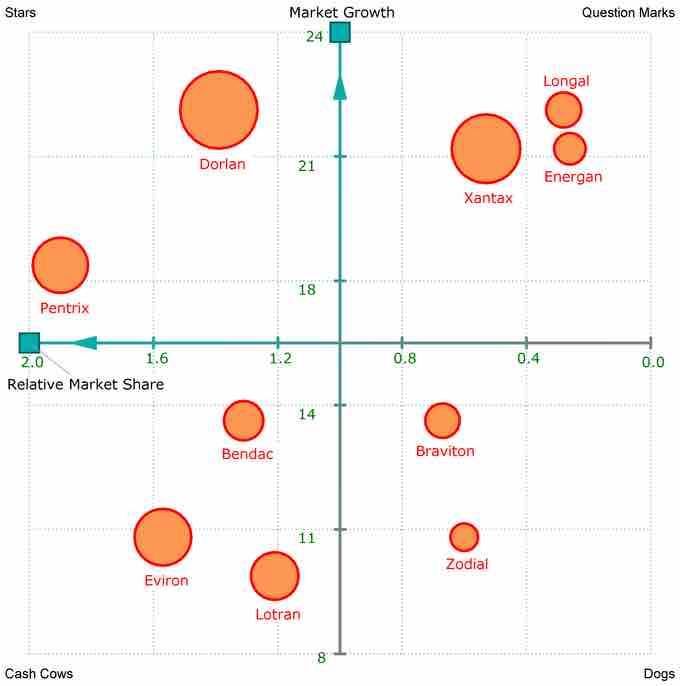BCG Matrix
The BCG Matrix was created in 1970 by Bruce Henderson and the Boston Consulting Group. The purpose of the BCG Matrix is to determine investment priorities for a company with a portfolio of products/BUs. A scatter graph is used to show how a product/BU ranks according to market share and growth rates.

BCG Matrix
This is the BCG Matrix.
Four Outcomes
According to the BCG Matrix, there are four different possible states for a product/BU:
- Cash Cow
- Dog
- Question Mark
- Star
A cash cow is a product/BU that has high market share and is in a slow growing industry. It is bringing in way more money than is being invested in it and the main idea is to ride it out as long as possible. A company shouldn't invest any more money in a cash cow because the industry cycle is at its end, but it is still a viable product/BU while the profits last.
A dog has a low market share in a mature industry. There is no room for growth so no more funds should be invested in the product or product/BU. If it is a BU, then the consensus is to sell it off.
A question mark is a product/BU growing rapidly in a growing industry. It is consuming vast amounts of financing at this point and creating a low rate of return. A question mark does have the potential to become a star, however, so it should be monitored to determine its growth potential.
A star has a high market share in a high growing industry. This is a product line or BU a company should focus its efforts on in the hopes that it will become a cash cow before the end of its life cycle. According to the principles behind the BCG Matrix, as an industry grows, all business units become cows or dogs. Usually a BU will go from being a question mark, to a star, then a cow, and finally a dog.
Other Uses for the BCG Matrix
Other possible uses for the BCG Matrix are determining relative market share and the market growth rate of a product line. The BCG Matrix can help determine where a product is in its product life cycle and if there is a possibility of growth for the market or product.